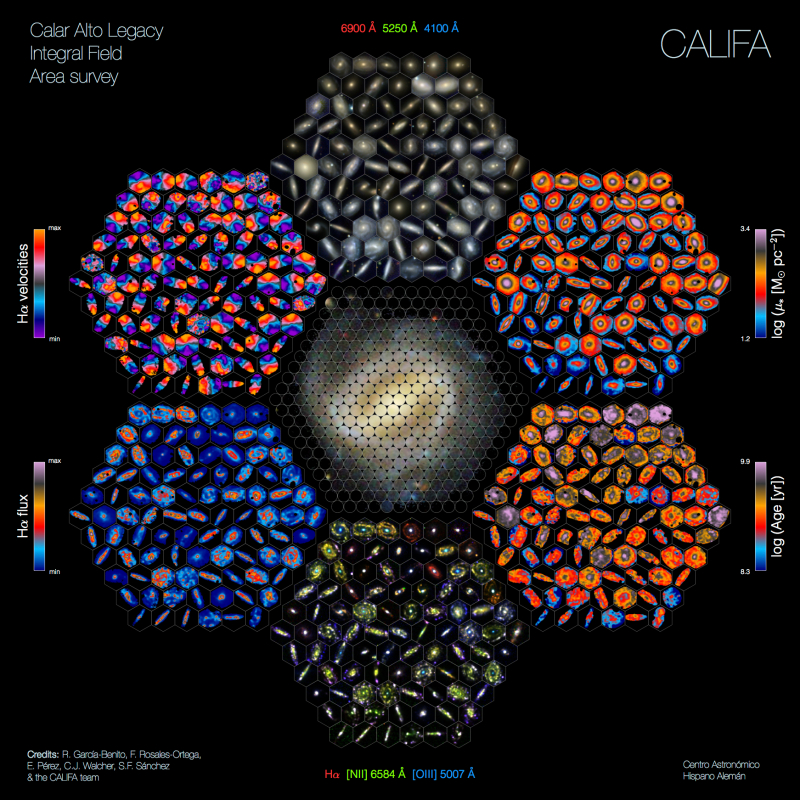Blogs
The CIEMAT has recognized the importance of CLAIFA with a Press Release:
Link to the Press Release
PhD student Rober Singh from MPIA in Heidelberg has been awarded one of this years Ernst Patzer Prizes for one of the best refereed publications by a young scientist among the astronomical institutes in Heidelberg, Germany (MPIA / ZAH). The paper is entitled "The nature of LINER galaxies" and has been published in the journal Astronomy & Astrophysics (Singh et al., 2013, A&A, 558, 43).
Using integral field spectroscopic data from the CALIFA survey, Robert compared the observed radial surface brightness profiles with what is expected from illumination by an AGN. Essential for this analysis is a proper extraction of emission lines, especially weak lines, such as Balmer Hβ lines, which are superposed on an absorption trough. To accomplish this, they used the GANDALF code, which simultaneously fits the underlying stellar continuum and emission lines.
Robert showed for 48 galaxies with LINER-like emission, that the radial emission-line surface brightness profiles are inconsistent with ionisation by a central point-source and hence cannot be due to an AGN alone. The most probable explanation for the excess LINER-like emission is ionisation by evolved stars during the short but very hot and energetic phase known as post-AGB. This leads us to an entirely new interpretation. Post-AGB stars are ubiquitous and their ionising effect should be potentially observable in every galaxy with the gas present and with stars older than ~1 Gyr unless a stronger radiation field from young hot stars or an AGN outshines them. This means that galaxies with LINER-like emission are not a class defined by a property but rather by the absence of a property. It also explains why LINER emission is observed mostly in massive galaxies with old stars and little star formation.
The CALIFA survey offers a four-years PhD fellowship associated to the
reseach project "CALIFA : CALAR ALTO LEGACY INTEGRAL FIELD AREA
SURVEY" (AYA2012-31935; P.I: S.F.Sánchez), to work at the Instituto de
Astrofísica de Andalucia (IAA-CSIC, Granada, Spain).
CALIFA has recently published the most significant evidence of the inside-out mass assanbly in galaxies, by the analysis of the spatially resolved starformation history of galaxies (Perez et al., 2013, ApJ Letters) .
The spatially resolved distribution of masses, at the current cosmological time, for the analyzed galaxies is shown in the following figure.
The following video summarizes the presentation event of the CALIFA 1st DR,
the 31st of October 2012, at the IAA headquarters:
The 1st of November we have released for its public use the 200 datacubes corresponding
to the first 100 objects observed with CALIFA. The details of the released data can
be found in the corresponding publication:
The details of how to access the data are described in the Data Release Webpage
B. Husemann et al have just published an article describin PyCosmic, a new code to detect cosmic rays, developed for the CALIFA pipeline and useful mostly for IFS data.
You can find a copy of the article in astro-ph
Keep tuned for next results.
